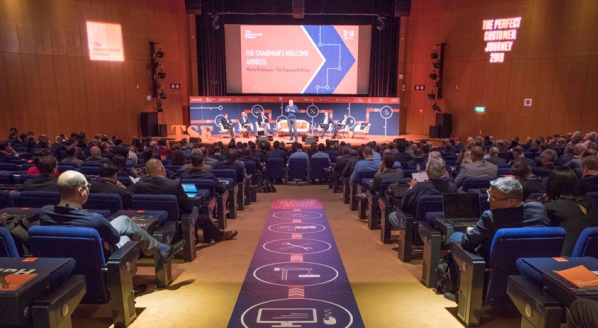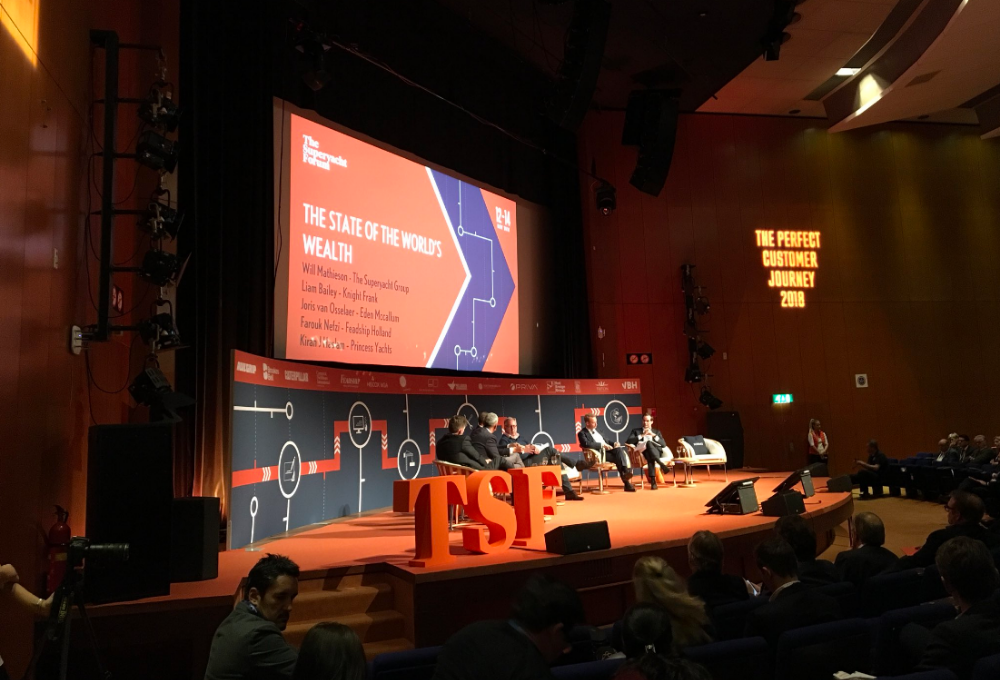The Superyacht Forum: The State of the World’s Wealth
A panel of experts discuss and debate the current growth and buying behaviour of the world’s UHNWIs on day one of The Superyacht Forum…
Understanding the psyche of the world’s UHNWI is fundamental to providing the perfect customer journey in yachting – and it was precisely this topic that drove the discussions in ‘The State of the World’s Wealth’ session on day one of The Superyacht Forum.
Chaired by Martin Redmayne of The Superyacht Group, the panel also comprised: Liam Bailey of Knight Frank; Farouk Nefzi of Feadship; Kiran Haslam of Princess Yachts; Will Mathieson of The Superyacht Group; and Joris van Osselaer of Eden McCallum.
The prelude for this session was The Superyacht Intelligence Agency’s recent publication, The Superyacht Annual Report 2018: Wealth, of which Knight Frank is a revered contributor. With the world ultra-wealth demographic in a state of constant evolution, the landscape of the superyacht market client pool is changing too and this will inform how the industry positions itself over the next five years and beyond.
Redmayne begins by clarifying just how minuscule the growth trajectory of the superyacht fleet is. “We’ve got a three per cent fleet growth per annum based on deliveries,” he explains. “It’s a very small marketplace with a tiny growth trajectory.” Charted against the growing number of those with a net worth of $50 million-plus – the lower wealth threshold for the aforementioned report – it begs the question, how do we attract more people into yachting who are able to play in our marketplace?
With the advent of financing opportunities, Haslam says we don’t need to get “hung up” on the number of individuals with a net worth of $50 million-plus who are not involved in yachting. “We [Princess Yachts] sold 12 boats in Fort Lauderdale this year and 70 per cent of those are financed,” he explains. “You’ve got a world now where money is incredibly cheap – a customer comes along and puts 20 per cent down and the rest of the finance is fixed a 3.25 per cent, so you can easily take money and have someone offset that cost.” He says there used to be a reluctance to borrow, but this has been ironed out in recent years with the influx of younger-generation buyers.
The superyacht market has witnessed a seemingly ceaseless decline in recent years, however Bailey considers it to be a “growth market” and “a great place to be”. He draws a parallel to the $10 million-plus real estate market, which is seeing a decline year on year.
“What we’re having to do is think about the customer. We require much greater customer intelligence than ever before because we’re being disrupted by difficult players online and we need to compete. Our USP is our ability to work and understand the need for quality service,” he says. “The real focus for us now in the real estate world is how do we ensure we’re working more closely with customers over time?”
“We’re working with tens of thousands of wealthy people around the world. Do we really understand everything they want to achieve and are our agents and brokers asking the right next question and really thinking about how they can get into the space?”
Bailey says in the last few years, Knight Frank has set up customer intelligence centres in Dubai, Beijing and London, initially for prospecting for new talent and customers. “In reality, what these centres became more useful for was for us to better understand the people we already know. We’re working with tens of thousands of wealthy people around the world. Do we really understand everything they want to achieve and are our agents and brokers asking the right next question and really thinking about how they can get into the space?”
He continues: “Back in 2008, we started asking questions of wealthy individuals around the world and how many houses they own, and it was four homes on average. Now, it’s about three, so there’s been a decline in the number of properties people are owning. What we’re also seeing is people disinvesting in terms of volume, but spending more on quality. People are more mobile now and they have less time to manage their portfolio of properties because it’s a hassle. It’s a simplification thing we’re reacting to.”
Nefzi believes a positive upward trajectory for the superyacht market will come from improving transparency and professionalism. “How do we serve the client throughout the supply chain in making the journey impeccable?” he asks. “We need to professionalise in the right way and we need to become more interesting. The growth of UHNWIs is coming from the Asia Pacific region and the younger generation – those are the two biggest growth areas. Asia Pacific needs to get more knowledgeable about the yachting life experience and we need to showcase it [better].”
Nefzi continues: “We [Feadship] have been organising captains’ summits for a few years and every time you ask a captain why the owner of the boat owns, they say, ‘When you are running the world and a conglomerate that has become the conglomerate that it is, you become a public figure under serious pressure. When they step out their helicopter and touch the teak with their bare feet, you see that pressure just sliding off their shoulders. It’s that intrinsic value our industry has to offer.”
Haslam believes it’s an error for people to chase a corporate identity, forgetting that it’s a people’s business. “That’s the beauty of the industry,” he says. “Bentley, Rolls-Royce, Aston Martin, McLaren and Porsche are trying to get into our customer base but the purchase barrier is much higher [in yachting]. If a car is £1.5 million they say they’ll have it, but emotion is where we have an opportunity.”
From the research van Osselaer has gleaned from the market, he believes the “appropriateness” of yachting has reduced. “One of the main drivers for this, I think, is sustainability”, but also that the target market of UHNWIs is as much a threat as it is an opportunity. “The richer are getting richer and they’re taking up a large chunk of the economic pie, which comes with more scrutiny. Wealth is becoming less appropriate.”
Stay tuned to SuperyachtNews this week for further reports on the sessions at The Superyacht Forum. If you would like to attend the last day of the event on 14 November, there is still time. Day passes will be available on the door tomorrow.
Profile links
Click here to become part of The Superyacht Group community, and join us in our mission to make this industry accessible to all, and prosperous for the long-term. We are offering access to the superyacht industry’s most comprehensive and longstanding archive of business-critical information, as well as a comprehensive, real-time superyacht fleet database, for just £10 per month, because we are One Industry with One Mission. Sign up here.
Related news

A propensity for superyachts
The first day of The Superyacht Forum asked the market to look at its established methodologies
Business

The tax landscape post-Brexit
Patrick Maflin, director at Marine Accounts, discusses the possible impact of Brexit on British seafarers
Crew




